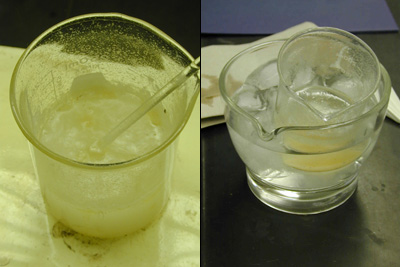

It works so well, we’d be tempted to use it for crisp baked goods all the time if it were more readily available. Crack cocaine is less pure than using ether to make freebase cocaine (there is lots of baking soda left), but the procedure is safer.

It is a potent brain stimulant and one of the most powerfully addictive drugs. Once the precipitate turns white, this is. An off white rock will begin to form on the stir rod, this is usually the cut. Stir for 30 seconds to 1 minute between each drop. One drop at a time add the ammonia solution to the cocaine solution. Furthermore, this leavener leaves none of the soapy-tasting residue of baking powder or baking soda. Cocaine is a drug extracted from the leaves of the coca plant. In one shot glass add one ml 10 ammonia to 9ml H2O, in the other glass add your cocaine to 10 ml h2o. This is because when its tiny crystals decompose in the heat of the oven, they leave minuscule air cells in their wake from which moisture easily escapes. When we tried trading baker’s ammonia for baking powder in a recipe for crisp sugar cookies, we found that not only can the two products be used interchangeably, but the baker’s ammonia produced a lighter, crunchier crumb.

Can Baking Powder Be Used as a Baker's Ammonia Substitute? (In fact, it turns out baker’s ammonia is the stuff that was passed under Victorian ladies’ noses to revive them when they swooned.) Because of its noxious scent, it is used to leaven only low-moisture baked goods like crisp cookies and crackers that thoroughly dry out during baking, lest the ammonia linger. When we purchased the powder from a mail-order source (it can also be found at some Greek and Middle Eastern markets), we quickly discovered its biggest drawback: an extremely potent smell. In fact, certain recipes for European and Middle Eastern cookies and crackers still call for it today. Baker’s ammonia, also known as ammonium bicarbonate (and often sold as ammonium carbonate), was the primary leavening agent used by bakers before the advent of baking soda and baking powder in the 19th century.


 0 kommentar(er)
0 kommentar(er)
